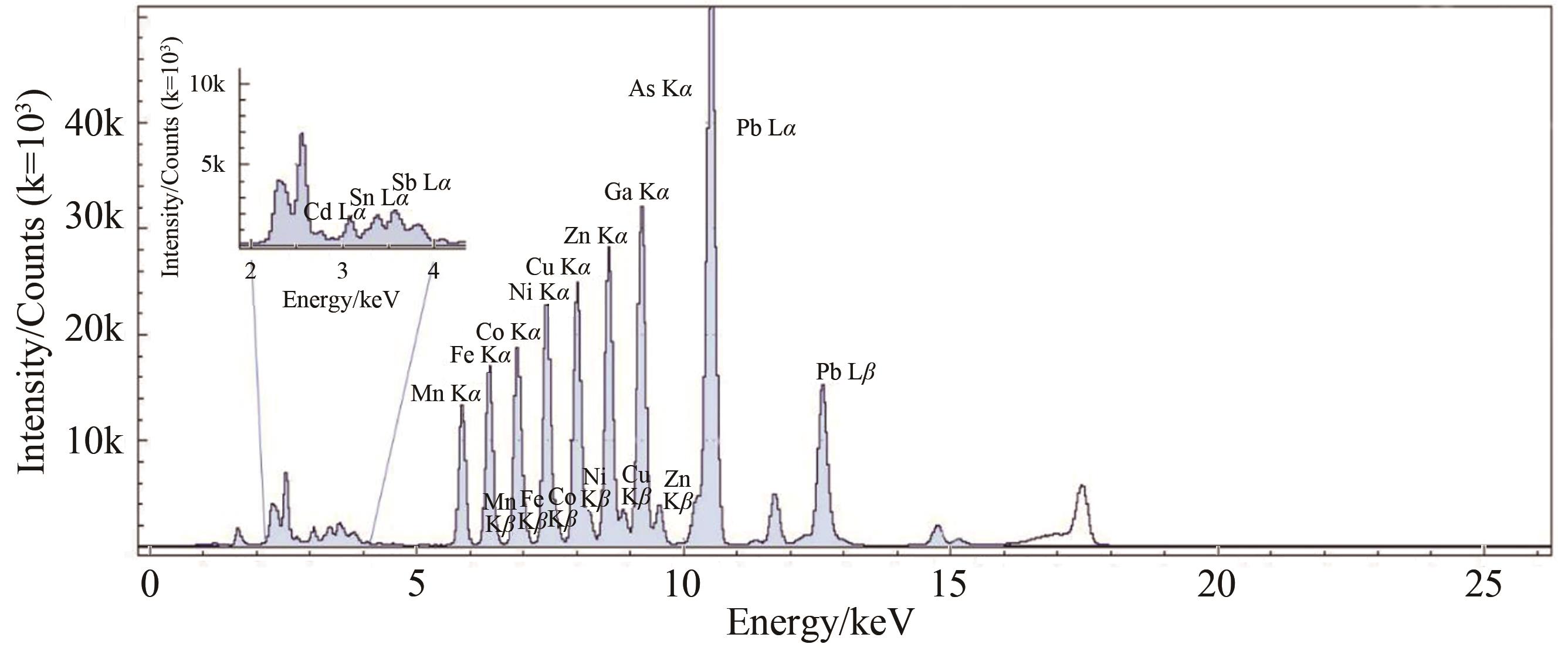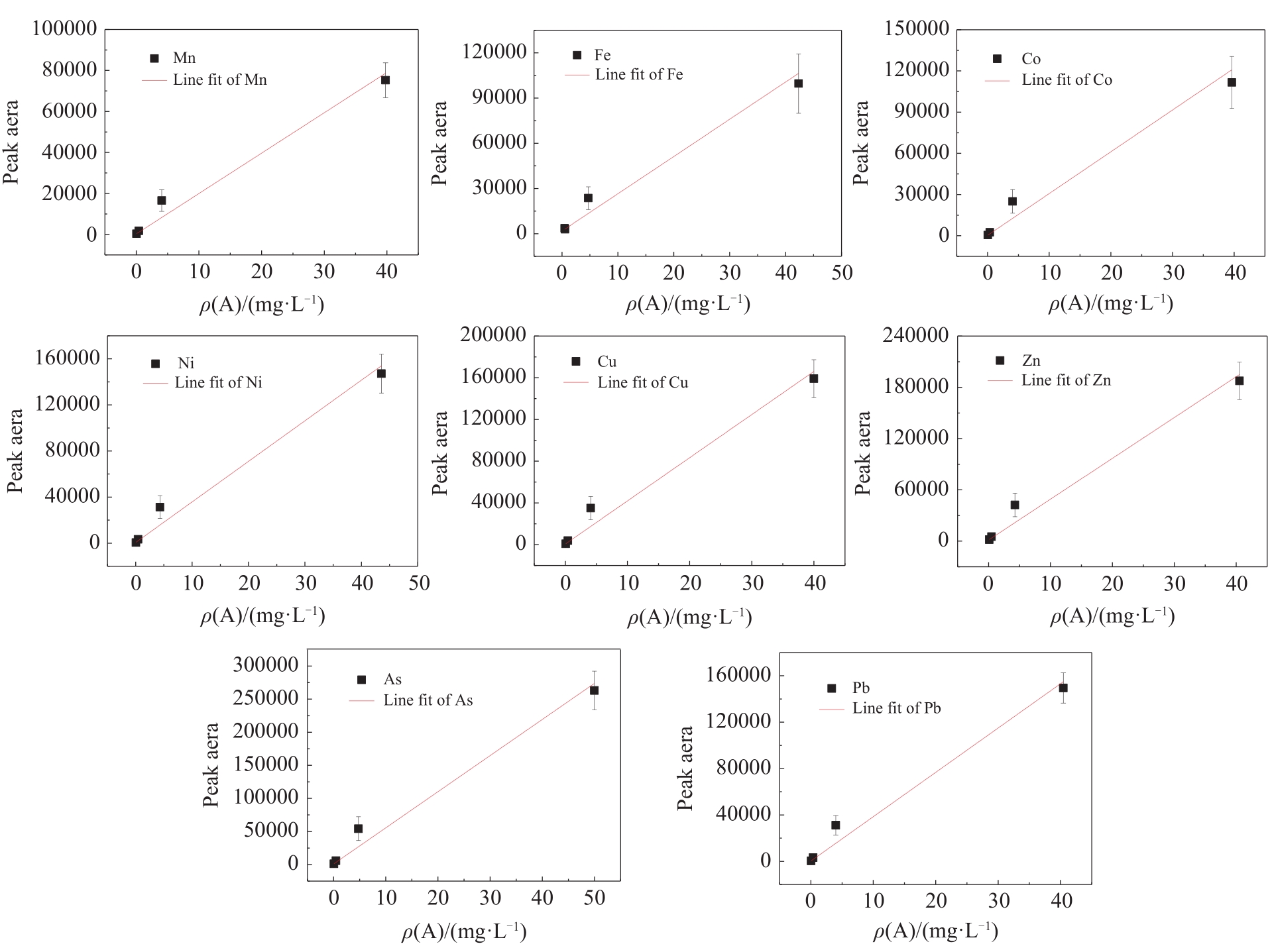| 1 |
PASHKOVA G V, REVENKO A G. A review of application of total reflection X-ray fluorescence spectrometry to water analysis[J]. Appl Spectrosc Rev, 2015, 50(6): 443-472.
|
| 2 |
王谦, 郑琳, 任飞, 等. 悬浮液进样-全反射X射线荧光光谱法测定膏霜类化妆品中的铅、砷和汞[J]. 分析化学,2018, 46(4): 517-523
|
|
WANG Q, ZHENG L, REN F, et al. Determination of lead,arsenic and mercury in cream cosmetics by total reflection X-ray fluorescence spectrometry using suspension sampling[J]. Chin J Anal Chem, 2018, 46(4): 517-523.
|
| 3 |
DULLIUS T, ESPINOZA-QUINONES F R, OBREGON P L, et al. An assessment of landfill leachate influences on water quality in the Boi Pigua river basin (Parana, Brazil) using the TXRF technique[J]. Environ Earth Sci, 2020, 79(5): 95.
|
| 4 |
RODRIGUEZ CASTRO M C, VILCHES C, TORREMORELL A, et al. Total reflection X-ray fluorescence in environmental and geochemical studies: unveiling solute provenance in streams during a rain episode[J]. X-Ray Spectrom, 2016, 45(4): 225-232.
|
| 5 |
GARMAY A V, OSKOLOK K V, MONOGAROVA O V, et al. Total reflection X-ray fluorescence analysis of highly mineralized water samples using relative intensities and scattered radiation[J]. Spectrochim Acta B, 2019, 152: 74-83.
|
| 6 |
GEORGIEVA R, DETCHEVA A, KARADJOV M, et al. Total reflection X-ray fluorescence analysis of trace elements in Bulgarian bottled mineral waters of low and high mineral content[J]. Int J Environ An Ch, 2013, 93(10SI): 1043-1051.
|
| 7 |
GEORGIEVA R H, DETCHEVA A K, KARADJOV M G, et al. Determination of the trace element content in Bulgarian bottled potable waters by total reflection X-ray fluorescence analysis[J]. Bulg Chem Commun, 2014, 46(4): 840-844.
|
| 8 |
KUNIMURA S, KAWAI J. Trace elemental analysis of commercial bottled drinking water by a portable total reflection X-ray fluorescence spectrometer[J]. Anal Sci, 2007, 23(10): 1185-1188.
|
| 9 |
KUNIMURA S, WATANABE D, KAWAI J. Analysis of trace elements in soft drink, environmental water, and leaching solution of toy by using portable total reflection X-ray fluorescence spectrometer[J]. Bunseki Kagaku, 2008, 57(2): 135-139.
|
| 10 |
LOPEZ M L, CEPPI S A, ASAR M L, et al. Rainwater analysis by synchrotron radiation-total reflection X-ray fluorescence[J]. Spectrochim Acta B, 2015, 113: 100-105.
|
| 11 |
DHARA S, MISRA N L. Application of total reflection X-ray fluorescence spectrometry for trace elemental analysis of rainwater[J]. Pramana-J Phys, 2011, 76(2): 361-366.
|
| 12 |
PATARACHAO B, TYO D D, CHEN D, et al. Methodology development and optimization for direct quantification of total selenium concentration in mine water by total-reflection X-ray fluorescence spectrometry[J]. Spectrochim Acta B, 2021, 177:106053.
|
| 13 |
FOMBA K W, DEABJI N, BARCHA S E I, et al. Application of TXRF in monitoring trace metals in particulate matter and cloud water[J]. Atmos Meas Tech, 2020, 13(9): 4773-4790.
|
| 14 |
褚彬彬, 王冀艳, 詹秀春, 等. 土壤中元素活动态的全反射X射线光谱分析[J]. 光谱学与光谱分析,2020, 40(7): 2278-2282
|
|
CHU B B, WANG J Y, ZHAN X C, et al. TXRF study on mobile forms of elements in soils[J]. Chin J Anal Chem, 2020, 40(7): 2278-2282.
|
| 15 |
THOMSEN V, SCHATZLEIN D, MERCURO D. Limits of detection in spectroscopy[J]. Spectroscopy, 2003, 18(12): 112-114.
|
| 16 |
GAO J, SHENG C, ZHU Y, et al. Inorganic multi-element analysis of foodstuff by means of low power total reflection X-ray fluorescence spectrometry using suspension sampling[J]. Spectrosc Spect Anal, 2020, 40(3): 945-949.
|
| 17 |
MAJUMDER S, MARGUI E, ROMAN-ROSS G, et al. Hollow fiber liquid phase microextraction combined with total reflection X-ray fluorescence spectrometry for the determination of trace level inorganic arsenic species in waters[J]. Talanta, 2020, 217:121005.
|
| 18 |
BELTRAN B G, RAMOS-SANCHEZ V, CHAVEZ-FLORES D, et al. Total reflection X-ray fluorescence spectroscopy (TXRF) method validation: determination of heavy metals in dietary supplements[J]. J Chem-Ny, 2020, (2020): 8817393.
|
| 19 |
SUGIOKA T, UMEDA H, KUNIMURA S. Effects of mechanical vibration during drying of solution sample in enhancing the sensitivity of total reflection X-ray fluorescence analysis[J]. Anal Sci, 2020, 36(4): 465-469.
|
| 20 |
ARTHUR R, SCHERER P. Application of total reflection X-ray fluorescence spectrometry to quantify cobalt concentration in the presence of high iron concentration in biogas plants[J]. Spectrosc Lett, 2020, 53(2): 100-113.
|
| 21 |
POLETTO A C, SINGI P, BARRI R M, et al. Relationship of levels of trace elements in saliva and dental caries in preschool children using total reflection X-ray fluorescence technique (TXRF)[J]. J Trace Elem Med Bio, 2021, 63: 126663.
|
| 22 |
SHALTOUT A A, ABDEL-HAMEED E S, BILO F, et al. Direct analysis of essential oils by means of TXRF spectrometry[J]. X-Ray Spectrom, 2020, 49(2): 322-331.
|
| 23 |
SHUKLA V K, DHARA S, MISHRA N L. Total reflection X-ray fluorescence spectrometric determination of ultra-trace uranium in natural water samples using a dispersive liquid-liquid micro-extraction method[J]. J Anal Atom Spectrom, 2020, 35(8): 1632-1640.
|
| 24 |
VAZQUEZ C, GONZALES SINTAS M F, CERCHIETTI L. Performance of TXRF among other competitors' analytical techniques[J]. X-Ray Spectrom, 2020, 49(3): 374-378.
|

 ), Ling-Yun LI2, Yong-Zhen PENG1(
), Ling-Yun LI2, Yong-Zhen PENG1( )
)

